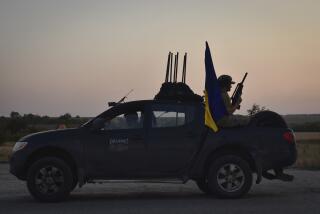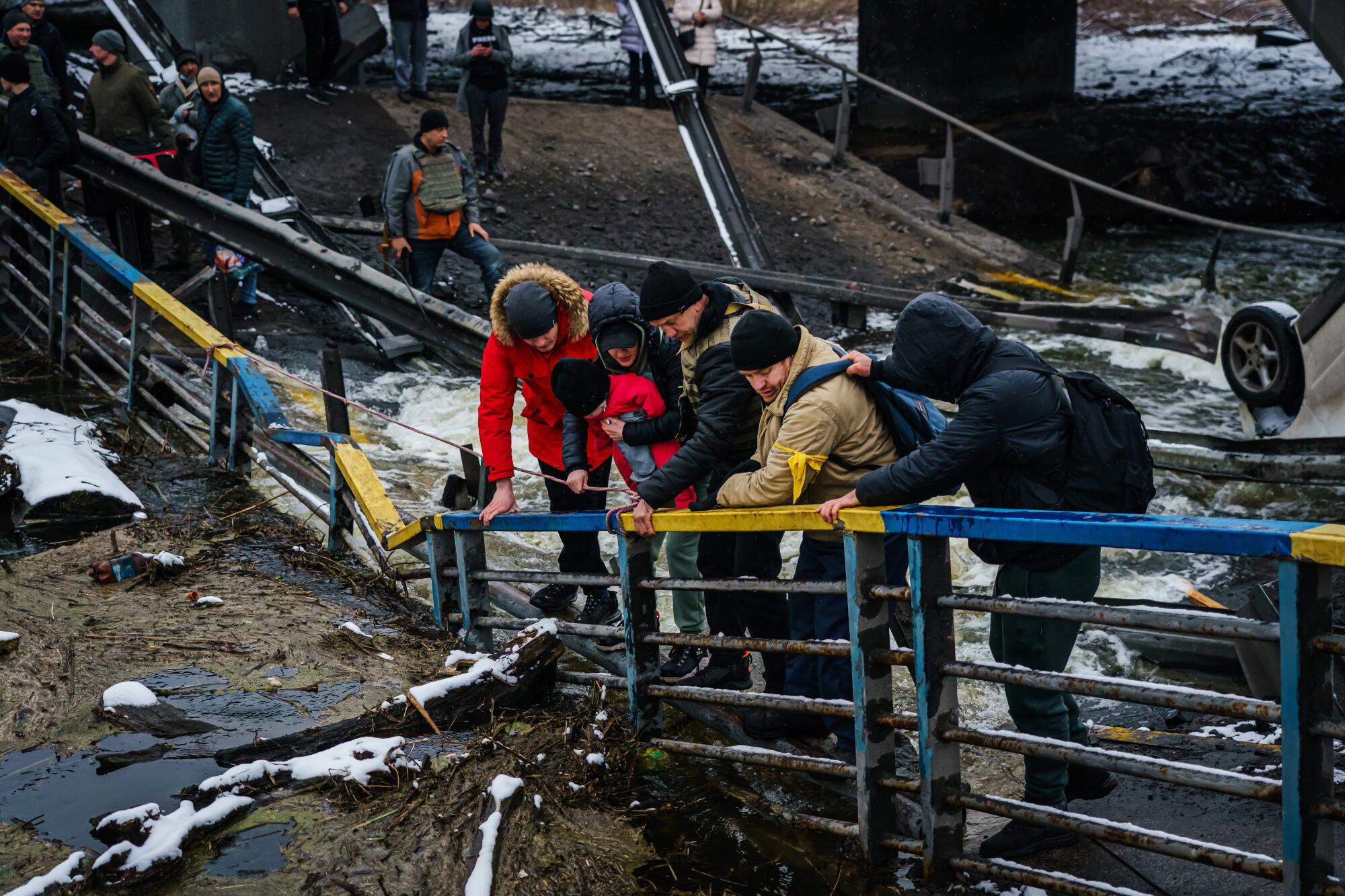
- Share via
IRPIN, Ukraine — It was quiet on the bridge over the Bucha River. The edge of this northwestern suburb of Kyiv was close to the front line. Still, the Ukrainian soldiers stationed here kept an easy vigil, laughing and joking with one another as they gazed toward the north, where Russian forces were gathering to make their expected blitz into the capital.
The scars of a fierce battle linger here.
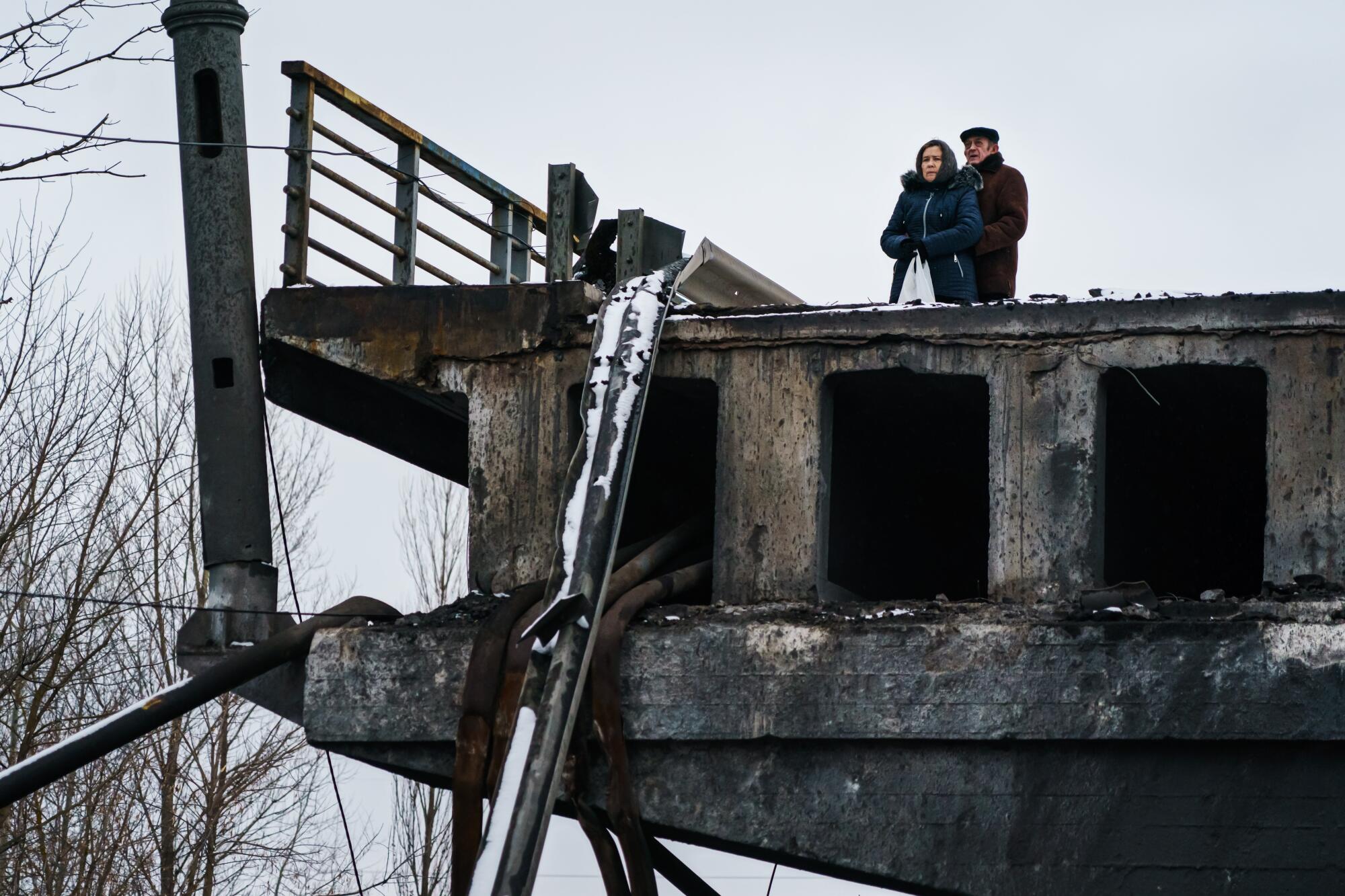
In front of the singed exterior of the now-shuttered Giraffe Mall, residents clutching grocery bags picked their way around the burnt husk and scattered detritus of a ripped-apart armored personnel carrier. Its occupants weren’t far away — not far from the mall’s service entrance, the bodies of two Russian soldiers lay side by side near a piece of fallen, crumpled yellow cladding.
Two more had been tossed onto the train tracks on the opposite side of the street; they lay in the mud, spread-eagled at right angles near a streak of red and some discarded bullets. One corpse was on its back with arms outstretched, a smear of dirt on the exposed midriff and the face partially veiled by a sprinkling of snow.
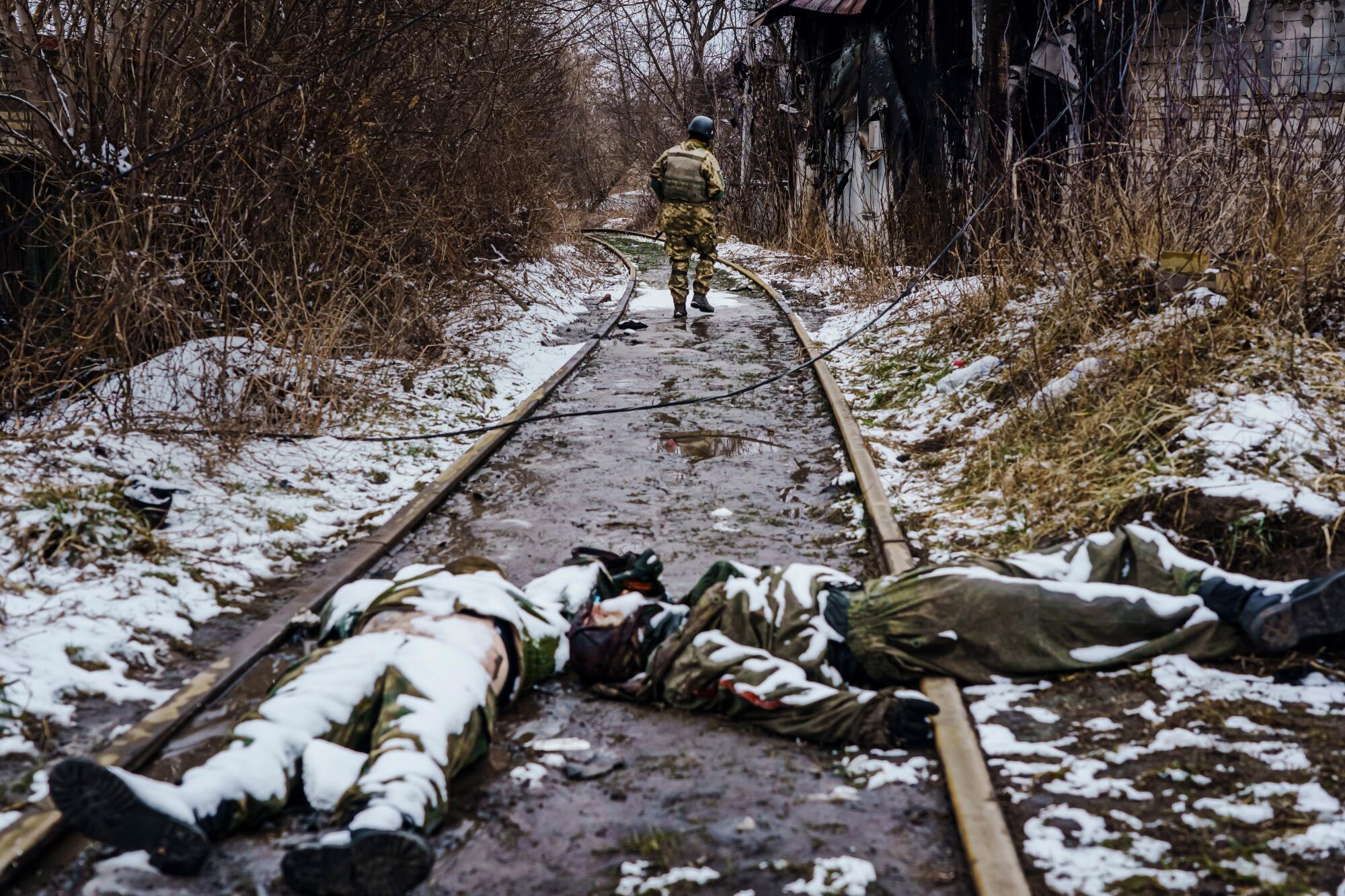
The Ukrainian soldiers on this end of the bridge, which remained in government hands as of Tuesday afternoon, had fortified their position ahead of what is reported to be a 40-mile-long column of Russian armored vehicles stretching to Antonov Airport, a scant four miles away. Yet the small arsenal that the Ukrainians had — a couple of armored personnel carriers, a double-cannoned antiaircraft gun and a bulldozer — underscored the imbalance of the forces fighting for Kyiv.
So far, though, the Russians’ advance had been limited, the soldiers said.
“They came at us on Sunday morning, at 9 a.m. No infantry, just two vehicles. We got one, then another came and tried to fall back, we got it too,” said one soldier who gave only his nickname, Fidel, bestowed upon him by his comrades because of his Castro-esque beard.
“Those corpses you saw? They’re all Russian. We have their documents. There’s more of them, but the bodies are still in the armored personnel carrier. They burned down to nothing.”
Fidel is 38. He had fought in eastern Ukraine in 2014 after separatists — with Russia’s help — seized a part of the Donbas region and established two breakaway republics. He was injured three times in combat, he said, forcing him to return home to Irpin. But the fight had found him again.
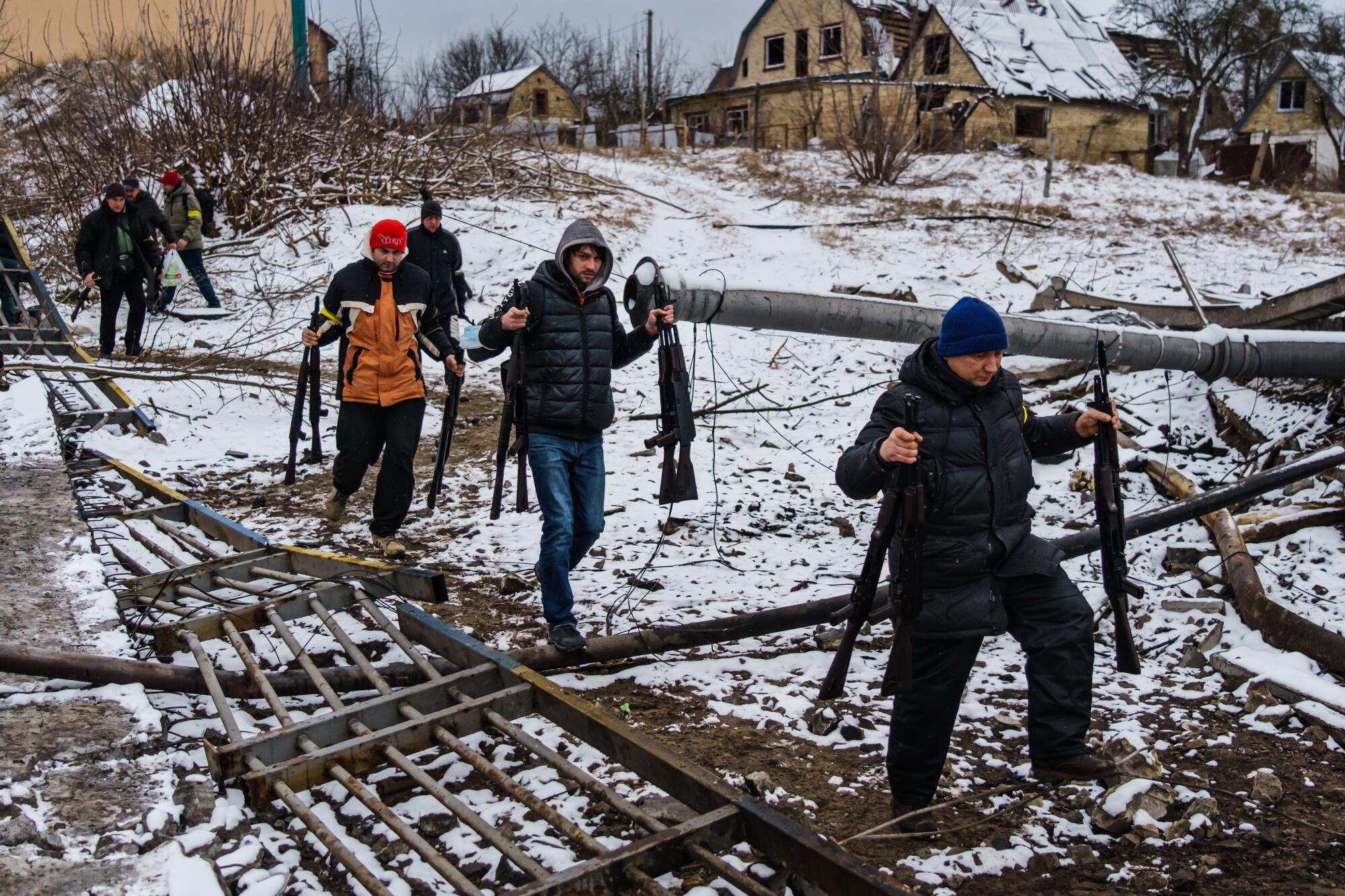
“Now the Russians are here and it’s home. I had to join,” he said.
“What other option I got?”
Whatever the plan had been for Sunday’s assault — whether to blitz into Kyiv or merely block all of its exits — it seems clear that Russia’s invasion, almost a week in, is set to take a more dangerous turn. Though the war has yet to witness the devastation wrought in previous Russian engagements in Syria and elsewhere, Moscow appears more willing in recent days to attack civilian areas.
The tools for escalation are already in place: The column at Antonov Airport (which is also known as Hostomel) is thought to have traveled from Belarus and is now massed some 17 miles from Kyiv’s center. U.S. satellite company Maxar Technologies reported on Tuesday that it is made up of armored vehicles, tanks, towed artillery and logistical vehicles.
Irpin lies on one of several routes into the capital, which is why, as Kyivites wait for Russia’s thrust into the city, soldiers, civilian reservists and residents here have made their own preparations.
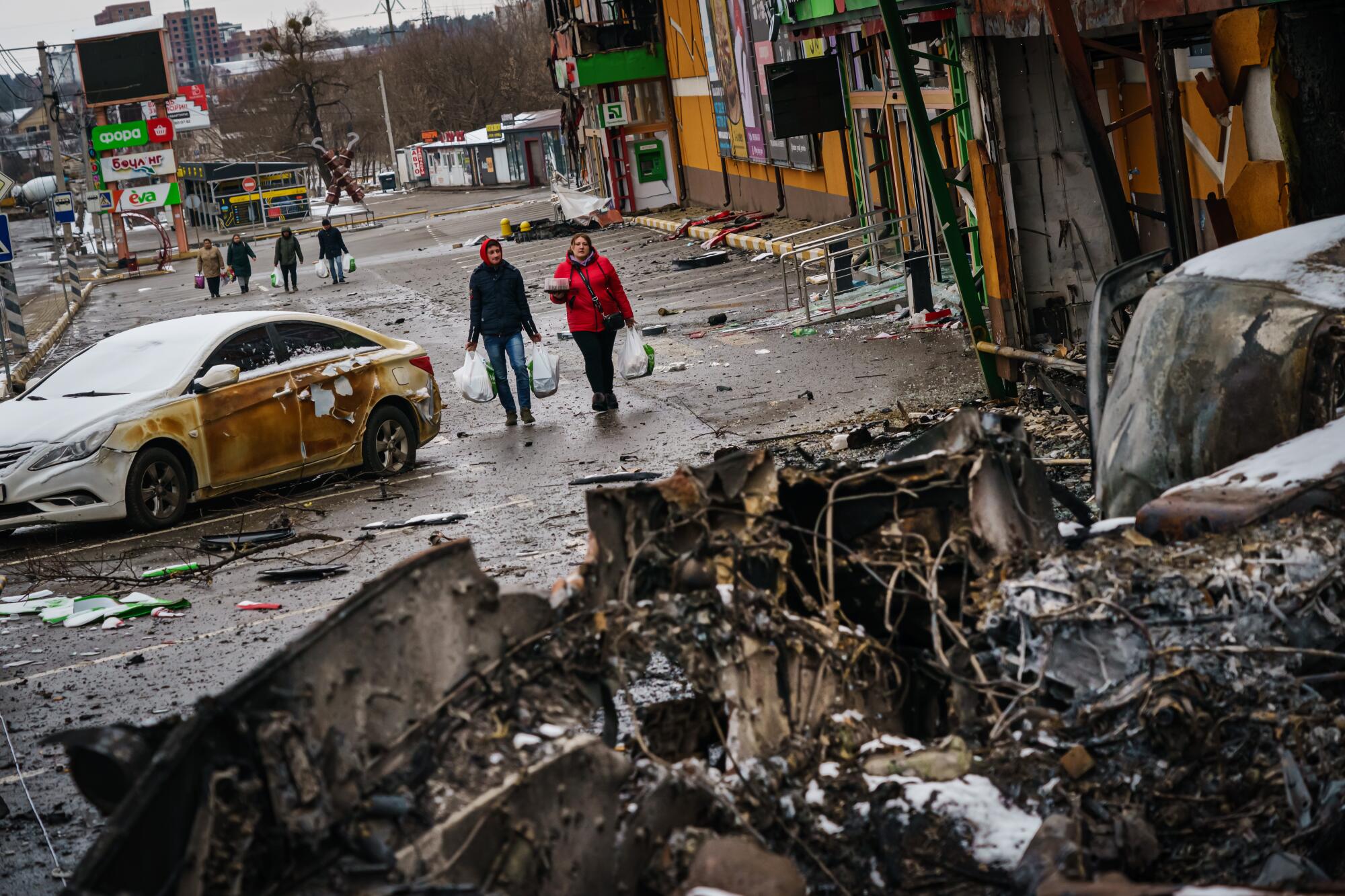
One of them is Roman Ilnitsky, a priest at the Irpin Bible Church, who with his daughter set up a shelter in the church basement for people forced to abandon their homes. On Tuesday, he drove a van around Irpin, picking up supplies from various stores as the distant sounds of artillery rumbled from somewhere over the horizon.
“We’re getting bread, tea, coffee — whatever people need so they can be comfortable,” he said.
In another vehicle was Maxim Chevchenko, a volunteer who along with his two friends was distributing medicine and food to Irpin residents unable to get around.
“I sent my mother and sister somewhere outside Kyiv to protect them, but I’m staying,” he said.
The most dramatic element in the defense of this city of some 60,000 people was on its southern edge, where the P30 highway stretches into a bridge over the Irpin River before turning into Kyiv. At least, it used to. A few days ago, Ukrainian authorities had blown it up, sending an entire section of the bridge tumbling into the river below in a shower of asphalt chunks and twisted metal. It was part of a larger cutoff of Kyiv to impede the coming Russian onslaught.
Someone had rigged two pipes between the riverbanks and strung a rope along the remains of a metal railing that was somehow still stretched over the water, serving as a makeshift footbridge for families escaping Irpin. People gingerly crossed over the rushing water: mothers balancing babies on one shoulder and a backpack or full-to-bursting plastic bags on the other; older men and women shuffling their feet side by side on the parallel pipes; one woman attempting to cross in high-heeled boots and slinky leather pants with a black Balenciaga bag slung over her shoulder.
“I don’t know why we decided to leave today. It was my father’s decision,” said Polina Pash, a slight 12-year-old girl with glasses, walking quickly behind her father, Vitaly. Behind her were her older sister and her mother, cradling a little dog close to her chest.
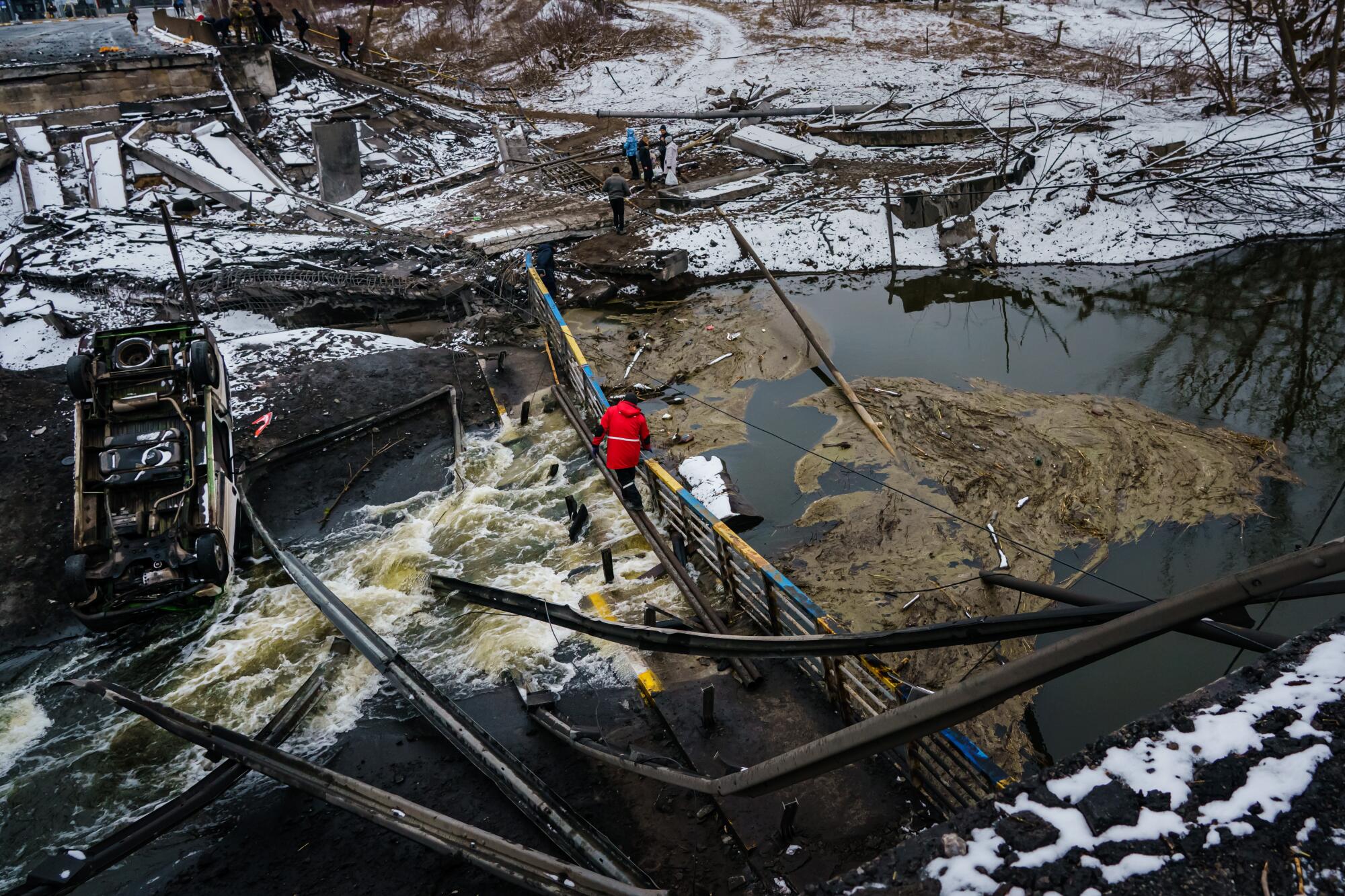
Vitaly, struggling to manage two backpacks and a large cardboard box, climbed up from the riverbank to the road above, barely able to speak from the exertion.
“It’s very, very bad…. All the time there were explosions,” he said, his voice trailing off as he panted to catch his breath. He and his family were living in Bucha, he said, even closer to Antonov Airport. The bombardment had simply become too much.
“Dangerous. It’s just too dangerous,” he said, turning briskly to walk away toward Kyiv with his family in tow.
Under the remains of the bridge stood a small black dog separated from its owner, its tail down and its eyes looking bewildered amid the rush. It trotted back and forth, searching for a familiar face among the people going past with whatever they could salvage from homes they didn’t know if they would see again.
More to Read
Sign up for Essential California
The most important California stories and recommendations in your inbox every morning.
You may occasionally receive promotional content from the Los Angeles Times.

